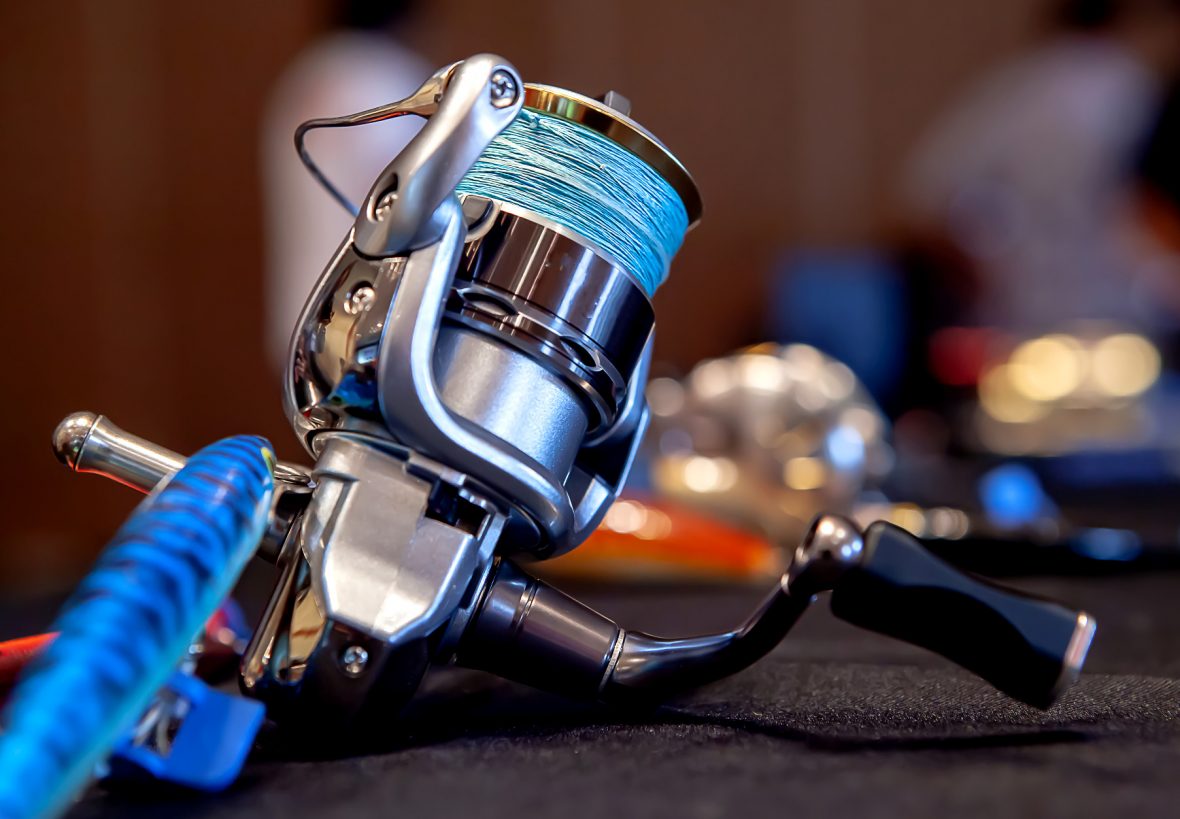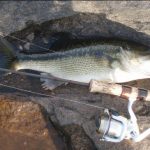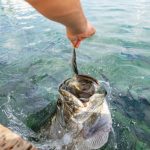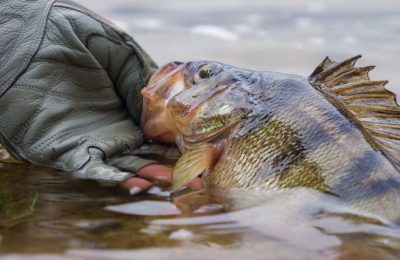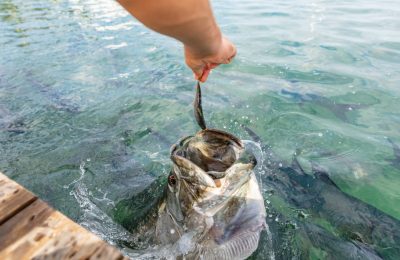When it comes to gear, anglers today have an almost overwhelming number of options. From rods and reels to jigs and rigs, the sheer volume is mind boggling. Add to that hundreds of different lines and it is enough to make even the most experienced angler pull out their hair.
In the 1990s, those options increased with the introduction of fluorocarbon fishing line. This new line was almost invisible in the water, thinner than traditional braided lines, and strong enough for most applications.
It is denser than water, so it sinks, does not stretch easily, has excellent abrasion resistance, and is resistant to UV light deterioration. In most situations, it is the preferred line for anglers. So, which is the best line to use and when?
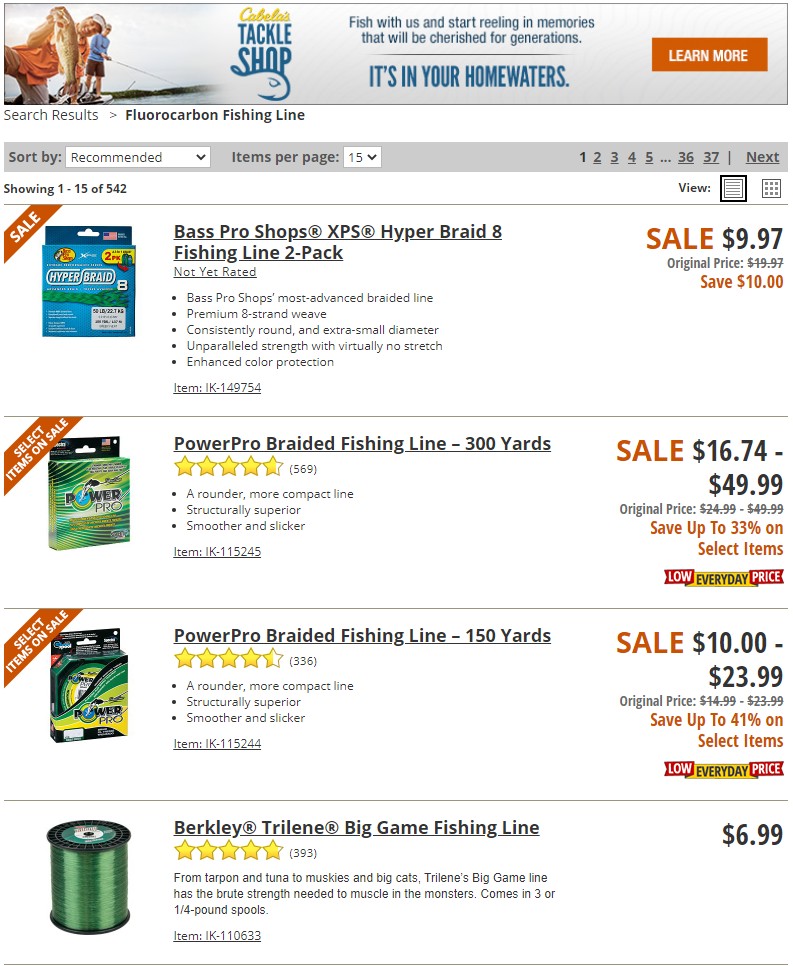
Why Fluorocarbon Fishing Line
Traditional braided line is preferred in situations that require extreme leverage and strength. It is best for pitching, flipping, and frogging, and especially when line visibility is not a concern.
Fluorocarbon line is best used to increase sensitivity, improve hookups, and give more action to lures. It is the premium line of choice for jig and worm fishing as the sensitivity is unrivaled and the line is nearly invisible in the water.
In addition, fluorocarbon lines offer incredible abrasion resistance around cover such as rocks, wood, and docks. It is almost as pliable and manageable as monofilament but still transmits lure feel much better.
This makes it the optimal line for fishing all types of crankbaits.
Brands
Although there are many brands of fluorocarbon lines out there, one consistently rises to the top – Seaguar. In particular, Seaguar INVIZX Fluorocarbon Fishing Line is one of the best out there.
While it is more expensive than other brands; 1,000 yards of 12 pound test will run about $100, this is a clear situation of getting what you pay for. With exceptional knot strength and surprising sensitivity, this line is a year-round pleaser.
Another excellent option, at about half the cost of Seagur, is Berkley Vanish fluorocarbon fishing line. This 100% fluorocarbon line is a past Bassmaster Classic Championship winner. Since it is 100% fluorocarbon, it is virtually invisible to the fish.
Ideal for stealth and finesse techniques, it also has a high strength to diameter ratio. This allows the angler to have less line on the spool for easier casts and retrievals.
For anglers on a tighter budget, P-Line CX Premium Fishing Line is a good compromise. A copolymer line that is coated with fluorocarbon fishing line, it gives the fisher most of the benefits of fluorocarbon at one fifth the cost. Just remember, it is not a true fluorocarbon so it will act more like a braided line.
How to Tie Braided Fishing Line to Monofilament or Fluorocarbon
Fluorocarbon lines were originally used as leaders. Indeed, it is only in the past few years that technological improvements have made the lines pliable enough to be used exclusively on a reel.
Still, for many anglers, the way to get the best of both worlds is to tie a fluorocarbon lead onto a braided line. However, there are even experienced anglers who have trouble doing so properly.
First, ensure the lines are appropriate for the conditions. For most, using a 15lb fluorocarbon fishing line for the lead is perfect. The trick is finding the correct knot.
One of the best knots is known as the Crazy Alberto knot. It takes practice and patience to become proficient at tying the Crazy Alberto, but it is worth the effort. This is, by far, the best bonding knot out there. In addition, it won’t cause bunching or snarling of the lines.
There are plenty of video tutorials online. Just remember to keep the lines wet as you finish the knot and apply a slow, even pressure pull to cinch it all together.
The easiest knot, although not the strongest, is the Double Uni knot, commonly used in fly fishing for leads. This is a good knot for beginners to start with, but upgrade to a stronger knot, such as the Aussie Quickie or Crazy Alberto, after mastering the Double Uni.
With its heightened sensitivity and invisible lines, fluorocarbon line has become the go to line for bass fishing. Just remember that fluorocarbon sinks, so it is not a good choice when using surface lures.
Seaguar tops the brands, with either the Red Label or Blue Label topping a number of “best of” lists. The Blue Label line, in particular, has outstanding tensile qualities.
It is virtually invisible submerged, meaning the bass fish won’t see it, and that means more catches. Its abrasion resistance is top notch, and it can hold up to the harsh environments in the bass world, like jagged rocks and other abrasive objects. It can also handle hard-fighting fish without breaking or snapping.
The down side is Seaguar is one of the most expensive lines out there. They make a solid product and know it, and are unabashedly willing to charge top dollar for it.
Sunline Super FC Sniper line was made with bass fishing in mind. It has a triple resin coating that makes it feel soft and supple when handling. No sliced fingertips here. The line also boasts a low memory, which makes it easy to cast.
Sniper line also has exceptional resistance. It will deliver impressive performance even in environments with jagged rocks, thick blowdowns, and high-density water. The only notable problem with this line is that it tangles easily. Still, at 40 percent less than the Seaguar, it might just be worth the risk.
Finally, for those looking for a budget friendly option, there is Stren Fluorocast Fluorocarbon fishing line. Despite being reasonably-priced, it casts well without having the line twists and other problems associated with other budget fluorocarbon lines.
Stren Flourocast maintains high sensitivity no matter how deep it sinks. This helps the angler know the difference between a bite and the line brushing against rocks or vegetation under the water. In other words, no missing out on a catch with this line.
While not invisible, this line is still hardly visible in the water and can do a great job when fishing for smaller bass in clear water. The only downside is that it has some line memory when coming off the spool. Fortunately, it tends to straighten out after some time.


